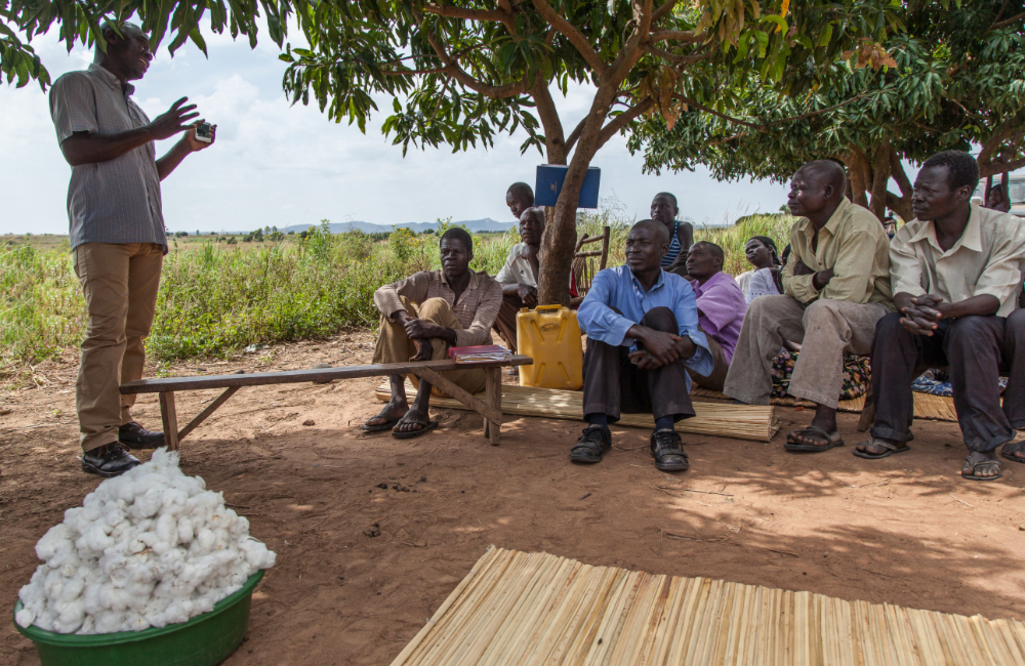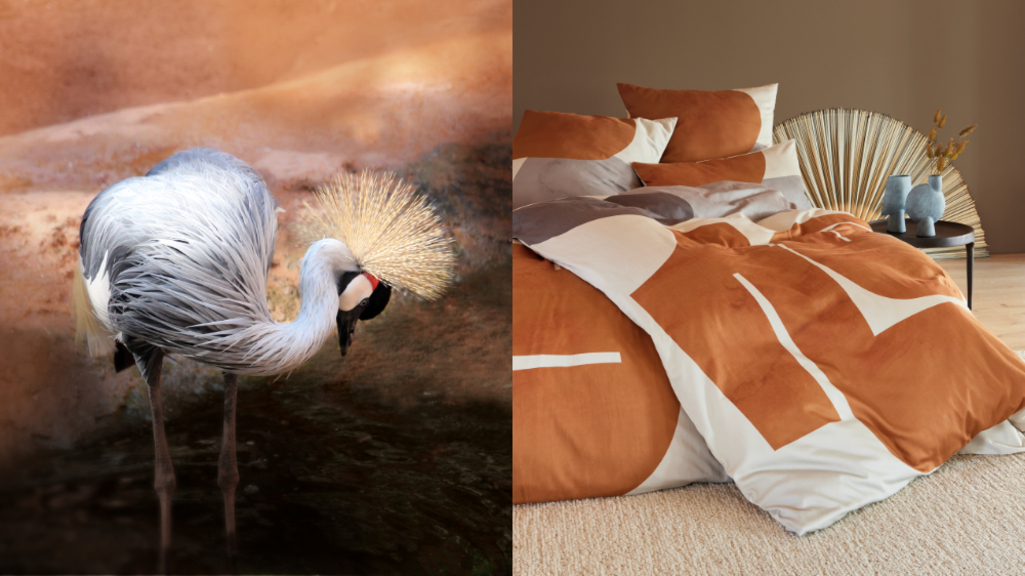Our Ugandan Organic Cotton Under the African Sun

The farmers' meetings are preferably held under the canopy of the mango tree. This is the place where people come together, organise and talk. @ Cotonea
In the fascination of the colours and shapes of Uganda...
The Republic of Uganda is one of the countries where the journey of our products begins. In the year-round tropical climate, the fields of our organic farmers are located in the northwest of the country. Due to the proximity to the equator, the daytime temperature is between a pleasantly warm 20 and 30 °C all year round. The landscape of Uganda is divided into the country, which is reserved for nature and animals, the national parks and game reserves. In order to gain an insight into the species-rich flora and fauna of the country, safaris are offered to those interested. Depending on the region, travelers can get acquainted with the classic animal world of Africa, be it lion, rhinoceros or elephant, but also peculiar creatures such as the shoebill or rare inhabitants such as the mountain gorilla can be discovered with a little luck on such organised tours. In addition to this land of "wild nature", there is of course also the area where the people of Uganda live.
In recent decades, the population has suffered severely under dictatorship and civil war. The majority of the population lives far away from the big cities in widely dispersed, small traditional villages surrounded by cultivated land. Due to the bloody civil war, the land lay fallow for many years and as a result, a lot of knowledge about agriculture was lost during this time. Uganda's soils are fertile and are regularly irrigated naturally by rain, which, together with plenty of sun, allows several harvests of different crops all year round. The mango tree is also of particular importance here. Evergreen and with a wide-spreading, dense canopy, people enjoy not only its sweet fruits, but also its soothing shade. Gatherings are preferably held under its crown of leaves.
The cultivation of organic cotton is primarily used by farmers to earn money. Money that the farmers use mainly for the health and education of their children. As a key partner in organic farming projects, Cotonea helps to give people new perspectives. The ecological aspect is important to Cotonea, as countless people die year after year from pesticide poisoning and degenerate the arable soils in conventional cultivation. Organic farming, on the other hand, preserves the fertility of the soil and the purity of vital groundwater in a natural and long-term way. Experienced farmers achieve high yields, but this requires a lot of ecological knowledge, which young farmers first have to learn and practice in training courses. This includes, for example, close observation of nature and practical knowledge of pests such as beneficial insects. The fields of our farmers are small, generously used and interspersed with all kinds of other bushes, hedges and trees. Crop rotation and mixed crop cultivation also play a role in maintaining healthy soils. In addition to cotton, sesame, chili, sunflower, sweet potatoes, cassava and beans are also planted and used by our farmers. Healthy soils, but also the preservation and careful care of natural seeds are the basis for healthy, strong cotton plants. Cotton plants, which, with their white seed grain fibres, provide the raw material for our textiles.
With this ecologically sustainable way of farming, farmers can live off their land and also keep it alive as a precious commodity for future generations. A healthy cycle of nature also promotes and conditions biodiversity. This awareness of the preservation of nature should help to ensure that animals such as the majestic grey-necked crowned crane (Balearica regulorum), which is now endangered in its survival, will continue to walk across the fields in the future. As the national bird of Uganda, it adorns the country's coat of arms and flag and, in keeping with the theme, is considered a messenger of good luck, even guardian of the health of its inhabitants. During his gallant courtship dances or in flight, his plumage comes into its own: in its grey-brown-white colouring, it harmonises with the earthy, warm colour scheme of the African landscape.
Not to forget the distinctive, eponymous feather crown in golden yellow on the back of the head, which is why they are sometimes called "peacock cranes". Our new bed linen design Arica subtly picks up on these earthy, warm shades in artful abstraction: a colour palette with a pleasantly balancing and calming effect. Arica reminds us with grateful appreciation of the important country of origin of our organic cotton, Uganda.
